
Benedictines

Ordo Sancti Benedicti | |
 Coat of arms of the order | |
Design on the obverse side of the Saint Benedict Medal | |
| Abbreviation | O.S.B. |
|---|---|
| Formation | 529 |
| Founder | Benedict of Nursia |
| Founded at | Subiaco Abbey |
| Type | Catholic religious order |
| Headquarters | Sant'Anselmo all'Aventino |
Members | 6,802 (3,419 priests) as of 2020[update] |
| Jeremias Schröder, OSB | |
Main organ | Benedictine Confederation |
Parent organization | Catholic Church |
| Website | osb |
The Benedictines, officially the Order of Saint Benedict (Latin: Ordo Sancti Benedicti, abbreviated as O.S.B. or OSB), are a mainly contemplative monastic order of the Catholic Church for men and for women who follow the Rule of Saint Benedict. Initiated in 529 they are the oldest of all the religious orders in the Latin Church.[1] The male religious are also sometimes called the Black Monks, especially in English speaking countries, after the colour of their habits. Not all Benedictines wear black, however, with some like the Olivetans wearing white.[2] They were founded by Benedict of Nursia, a 6th-century Italian monk who laid the foundations of Benedictine monasticism through the formulation of his Rule. Benedict's sister, Scholastica, possibly his twin, also became a religious from an early age, but chose to live as a hermit. They retained a close relationship until her death.[3]

Despite being called an order, the Benedictines do not operate under a single hierarchy but are instead organized as a collection of autonomous monasteries and convents, some known as abbeys. The order is represented internationally by the Benedictine Confederation, an organization set up in 1893 to represent the order's shared interests. They do not have a superior general or motherhouse with universal jurisdiction but elect an Abbot Primate to represent themselves to the Vatican and to the world.

Benedictine nuns are given the title Dame in preference to Sister.[4]

Historical development
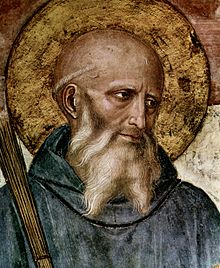
The monastery at Subiaco in Italy, established by Benedict of Nursia c. 529, was the first of the dozen monasteries he founded. He later founded the Abbey of Monte Cassino. There is no evidence, however, that he intended to found an order and the Rule of Saint Benedict presupposes the autonomy of each community. When Monte Cassino was sacked by the Lombards about the year 580, the monks fled to Rome, and it seems probable that this constituted an important factor in the diffusion of a knowledge of Benedictine monasticism.[5]

Copies of Benedict's Rule survived; around 594 Pope Gregory I spoke favorably of it. The rule is subsequently found in some monasteries in southern Gaul along with other rules used by abbots.[6] Gregory of Tours says that at Ainay Abbey, in the sixth century, the monks "followed the rules of Basil, Cassian, Caesarius, and other fathers, taking and using whatever seemed proper to the conditions of time and place", and doubtless the same liberty was taken with the Benedictine Rule when it reached them. In Gaul and Switzerland, it gradually supplemented the much stricter Irish or Celtic Rule introduced by Columbanus and others. In many monasteries it eventually entirely displaced the earlier codes.[5]


By the ninth century, however, the Benedictine had become the standard form of monastic life throughout the whole of Western Europe, excepting Scotland, Wales, and Ireland, where the Celtic observance still prevailed for another century or two.[5] Largely through the work of Benedict of Aniane, it became the rule of choice for monasteries throughout the Carolingian empire.[7]

Monastic scriptoria flourished from the ninth through the twelfth centuries. Sacred Scripture was always at the heart of every monastic scriptorium. As a general rule those of the monks who possessed skill as writers made this their chief, if not their sole, active work. An anonymous writer of the ninth or tenth century speaks of six hours a day as the usual task of a scribe, which would absorb almost all the time available for active work in the day of a medieval monk.[8]

In the Middle Ages monasteries were often founded by the nobility. Cluny Abbey was founded by William I, Duke of Aquitaine in 910. The abbey was noted for its strict adherence to the Rule of Saint Benedict. The abbot of Cluny was the superior of all the daughter houses, through appointed priors.[7]

One of the earliest reforms of Benedictine practice was that initiated in 980 by Romuald, who founded the Camaldolese community.[9] The Cistercians branched off from the Benedictines in 1098; they are often called the "White monks".[10]

The dominance of the Benedictine monastic way of life began to decline towards the end of the twelfth century, which saw the rise of the mendicant Franciscans and nomadic Dominicans.[7] Benedictines by contrast, took a vow of "stability", which professed loyalty to a particular foundation in a particular location. Not being bound by location, the mendicants were better able to respond to an increasingly "urban" environment. This decline was further exacerbated by the practice of appointing a commendatory abbot, a lay person, appointed by a noble to oversee and to protect the assets of the monastery. Often, however, this resulted in the appropriation of the assets of monasteries at the expense of the community which they were intended to support.[11]

Austria & Germany

Saint Blaise Abbey in the Black Forest of Baden-Württemberg is believed to have been founded around the latter part of the tenth century. Between 1070 and 1073 there seem to have been contacts between St. Blaise and the Cluniac Abbey of Fruttuaria in Italy, which led to St. Blaise following the Fruttuarian reforms. The Empress Agnes was a patron of Fruttuaria, and retired there in 1065 before moving to Rome. The Empress was instrumental in introducing Fruttuaria's Benedictine customs, as practiced at Cluny, to Saint Blaise Abbey in Baden-Württemberg.[12] Other houses either reformed by, or founded as priories of, St. Blasien were Muri Abbey (1082), Ochsenhausen Abbey (1093), Göttweig Abbey (1094), Stein am Rhein Abbey (before 1123) and Prüm Abbey (1132). It also had significant influence on the abbeys of Alpirsbach (1099), Ettenheimmünster (1124) and Sulzburg (c. 1125), and the priories of Weitenau (now part of Steinen, c. 1100), Bürgel (before 1130) and Sitzenkirch (c. 1130).

France


Fleury Abbey in Saint-Benoît-sur-Loire, Loiret was founded in about 640.[13] It is one of the most celebrated Benedictine monasteries of Western Europe, and possesses the relics of St. Benedict. Like many Benedictine abbeys it was located on the banks of a river, here the Loire.[14] Ainey Abbey is a ninth century foundation on the Lyon peninsula. In the twelfth century on the current site there was a romanesque monastery, subsequently rebuilt.

The seventeenth century saw a number of Benedictine foundations for women, some dedicated to the indigent to save them from a life of exploitation, others dedicated to the Perpetual Adoration of the Blessed Sacrament such as the one established by Catherine de Bar (1614–1698).[15] In 1688 Dame Mechtilde de Bar assisted Marie Casimire Louise de La Grange d'Arquien, queen consort of Poland, to establish a Benedictine foundation in Warsaw.[16]

Abbeys were among the institutions of the Catholic Church swept away during the French Revolution. Monasteries and convents were again allowed to form in the 19th century under the Bourbon Restoration. Later that century, under the Third French Republic, laws were enacted preventing religious teaching. The original intent was to allow secular schools. Thus in 1880 and 1882, Benedictine teaching monks were effectively exiled; this was not completed until 1901.[17][18][19][20]

In 1898 Marie-Adèle Garnier, in religion, Mother Marie de Saint-Pierre, founded in Montmartre (Mount of the Martyr), Paris a Benedictine house.[21] However, the Waldeck-Rousseau's Law of Associations, passed in 1901, placed severe restrictions on religious bodies which were obliged to leave France. Garnier and her community relocated to another place associated with executions, this time it was in London, near the site of Tyburn tree where 105 Catholic martyrs—including Saint Oliver Plunkett and Saint Edmund Campion had been executed during the English Reformation. A stone's throw from Marble Arch, the Tyburn Convent is now the Mother House of the Congregation.[22]

Poland & Lithuania

Benedictines are thought to have arrived in the Kingdom of Poland in the 11th-century. One of the earliest foundations is Tyniec Abbey on a promontory by the Vistula river. The Tyniec monks led the translation of the Bible into Polish vernacular. Other surviving Benedictine houses can be found in Stary Kraków Village, Biskupów, Lubiń. Older foundations are in Mogilno, Trzemeszno, Łęczyca, Łysa Góra and in Opactwo, among others. In the Middle Ages the city of Płock, also on the Vistula, had a successful monastery, which played a significant role in the local economy. In the 18th-century benedictine convents were opened for women, notably in Warsaw's New Town.[citation needed]

A 15th-century Benedictine foundation can be found in Senieji Trakai, a village in Eastern Lithuania.

Switzerland
Kloster Rheinau was a Benedictine monastery in Rheinau in the Canton of Zürich, Switzerland, founded in about 778.[23] The abbey of Our Lady of the Angels was founded in 1120.[24]

United Kingdom
The English Benedictine Congregation is the oldest of the nineteen Benedictine congregations. Through the influence of Wilfrid, Benedict Biscop, and Dunstan,[25] the Benedictine Rule spread rapidly, and in the North it was adopted in most of the monasteries that had been founded by the Celtic missionaries from Iona. Many of the episcopal sees of England were founded and governed by the Benedictines, and no fewer than nine of the old cathedrals were served by the black monks of the priories attached to them.[5] Monasteries served as hospitals and places of refuge for the weak and homeless. The monks studied the healing properties of plants and minerals to alleviate the sufferings of the sick.[26]

During the English Reformation, all monasteries were dissolved and their lands confiscated by the Crown, forcing those who wished to continue in the monastic life to flee into exile on the Continent. During the 19th century English members of these communities were able to return to England.[citation needed]


St. Mildred's Priory, on the Isle of Thanet, Kent, was built in 1027 on the site of an abbey founded in 670 by the daughter of the first Christian King of Kent. Currently the priory is home to a community of Benedictine nuns. Five of the most notable English abbeys are the Basilica of St Gregory the Great at Downside, commonly known as Downside Abbey, The Abbey of St Edmund, King and Martyr commonly known as Douai Abbey in Upper Woolhampton, Reading, Berkshire, Ealing Abbey in Ealing, West London, and Worth Abbey.[27][28] Prinknash Abbey, used by Henry VIII as a hunting lodge, was officially returned to the Benedictines four hundred years later, in 1928. During the next few years, so-called Prinknash Park was used as a home until it was returned to the order.[29]

St. Lawrence's Abbey in Ampleforth, Yorkshire was founded in 1802. In 1955, Ampleforth set up a daughter house, a priory at St. Louis, Missouri which became independent in 1973 and became Saint Louis Abbey in its own right in 1989.[30]


As of 2015, the English Congregation consists of three abbeys of nuns and ten abbeys of monks. Members of the congregation are found in England, Wales, the United States of America, Peru and Zimbabwe.[31]

In England there are also houses of the Subiaco Cassinese Congregation: Farnborough, Prinknash, and Chilworth: the Solesmes Congregation, Quarr and St Cecilia's on the Isle of Wight, as well as a diocesan monastery following the Rule of Saint Benedict: The Community of Our Lady of Glastonbury.[32]

Since the Oxford Movement, there has also been a modest flourishing of Benedictine monasticism in the Anglican Church and Protestant Churches. Anglican Benedictine Abbots are invited guests of the Benedictine Abbot Primate in Rome at Abbatial gatherings at Sant'Anselmo.[33]

In 1168 local Benedictine monks instigated the anti-semitic blood libel of Harold of Gloucester as a template for explaining child deaths. According to historian Joe Hillaby, the blood libel of Harold was crucially important because for the first time an unexplained child death occurring near the Easter festival was arbitrarily linked to Jews in the vicinity by local Christian churchmen: "they established a pattern quickly taken up elsewhere. Within three years the first ritual murder charge was made in France."[34]

Monastic libraries in England
The forty-eighth Rule of Saint Benedict prescribes extensive and habitual "holy reading" for the brethren.[35] Three primary types of reading were done by the monks in medieval times. Monks would read privately during their personal time, as well as publicly during services and at mealtimes. In addition to these three mentioned in the Rule, monks would also read in the infirmary. Monasteries were thriving centers of education, with monks and nuns actively encouraged to learn and pray according to the Benedictine Rule. Rule 38 states that 'these brothers' meals should usually be accompanied by reading, and that they were to eat and drink in silence while one read out loud.

Benedictine monks were not allowed worldly possessions, thus necessitating the preservation and collection of sacred texts in monastic libraries for communal use.[36] For the sake of convenience, the books in the monastery were housed in a few different places, namely the sacristy, which contained books for the choir and other liturgical books, the rectory, which housed books for public reading such as sermons and lives of the saints, and the library, which contained the largest collection of books and was typically in the cloister.

The first record of a monastic library in England is in Canterbury. To assist with Augustine of Canterbury's English mission, Pope Gregory the Great gave him nine books which included the Gregorian Bible in two volumes, the Psalter of Augustine, two copies of the Gospels, two martyrologies, an Exposition of the Gospels and Epistles, and a Psalter.[37]: 23–25 Theodore of Tarsus brought Greek books to Canterbury more than seventy years later, when he founded a school for the study of Greek.[37]: 26

United States
The first Benedictine to live in the United States was Pierre-Joseph Didier. He came to the United States in 1790 from Paris and served in the Ohio and St. Louis areas until his death. The first actual Benedictine monastery founded was Saint Vincent Archabbey, located in Latrobe, Pennsylvania. It was founded in 1832 by Boniface Wimmer, a German monk, who sought to serve German immigrants in America. In 1856, Wimmer started to lay the foundations for St. John's Abbey in Minnesota. In 1876, Herman Wolfe, of Saint Vincent Archabbey established Belmont Abbey in North Carolina.[38] By the time of his death in 1887, Wimmer had sent Benedictine monks to Kansas, New Jersey, North Carolina, Georgia, Florida, Alabama, Illinois, and Colorado.[39]

Wimmer also asked for Benedictine sisters to be sent to America by St. Walburg Convent in Eichstätt, Bavaria. In 1852, Sister Benedicta Riepp and two other sisters founded St. Marys, Pennsylvania. Soon they would send sisters to Michigan, New Jersey, and Minnesota.[39]

By 1854, Swiss monks began to arrive and founded St. Meinrad Abbey in Indiana, and they soon spread to Arkansas and Louisiana. They were soon followed by Swiss sisters.[39]

There are now over 100 Benedictine houses across America. Most Benedictine houses are part of one of four large Congregations: American-Cassinese, Swiss-American, St. Scholastica, and St. Benedict. The congregations mostly are made up of monasteries that share the same lineage. For instance the American-Cassinese congregation included the 22 monasteries descended from Boniface Wimmer.[40]

Benedictine vows and life
A sense of community has been the defining characteristic of the order since the beginning.[41] To that end, section 17 in chapter 58 of the Rule of Saint Benedict specifies the solemn vows candidates joining a Benedictine community are required to make: a vow of stability, to remain in the same community), and to adopt a "conversion of habits", in Latin, conversatio morum and obedience to the community's superior.[42] The "Benedictine vows" are equivalent to the evangelical counsels accepted by all candidates entering a religious order. The interpretation of conversatio morum understood as "conversion of the habits of life" has generally been replaced by notions such as adoption of a monastic manner of life, drawing on the Vulgate's use of conversatio as indicating "citizenship" or "local customs", see Philippians 3:20. The Rule enjoins monks and nuns "to live in this place as a religious, in obedience to its rule and to the abbot or abbess."

Benedictine abbots and abbesses have jurisdiction over their abbey and thus canonical authority over the monks or nuns who are resident. This authority includes the power to assign duties, to decide which books may or may not be read, to regulate comings and goings, and to punish and to excommunicate, in the sense of an enforced isolation from the monastic community.

A tight communal timetable – the horarium – is meant to ensure that the time given by God is not wasted but used in God's service, whether for prayer, work, meals, spiritual reading or sleep. The order's motto is Ora et Labora "pray and work".

Although Benedictines do not take a vow of silence, hours of strict silence are set, and at other times silence is maintained as much as is practically possible. Social conversations tend to be limited to communal recreation times. Such details, like other aspects of the daily routine of a Benedictine house are left to the discretion of the superior, and are set out in its customary, the code adopted by a particular Benedictine house by adapting the Rule to local conditions.[43]

According to the norms of the 1983 Code of Canon Law, a Benedictine abbey is a "religious institute" and its members therefore participate in consecrated life which Canon 588 §1 explains is intrinsically "neither clerical nor lay." Males in consecrated life, however, may be ordained.

Benedictines' rules contain a reference to ritual purification, which is inspired by Benedict's encouragement of bathing.[44] Benedictine monks have played a role in the development and promotion of spas.[45]

Organization
Benedictine monasticism differs from other Christian religious orders in that as congregations sometimes with several houses, some of them in other countries, they are not bound into a unified religious order headed by a "Superior General". Each Benedictine congregation is autonomous and governed by an abbot or abbess.[46]

The autonomous houses are characterised by their chosen charism or specific dedication to a particular devotion. For example, In 1313 Bernardo Tolomei established the Order of Our Lady of Mount Olivet. The community adopted the Rule of Saint Benedict and received canonical approval in 1344. The Olivetans are part of the Benedictine Confederation.[47] Other specialisms, such as Gregorian chant as at Solesmes in France, or Perpetual Adoration of the Holy Sacrament have been adopted by different houses, as at the Warsaw Convent, or the Adorers of the Sacred Heart of Montmartre at Tyburn Convent in London. Other houses have dedicated themselves to books, reading, writing and printing them as at Stanbrook Abbey in England. Others still are associated with the places where they were founded or their founders centuries ago, hence Cassinese, Subiaco, Camaldolese or Sylvestrines.

All Benedictine houses became federated in the Benedictine Confederation brought into existence by Pope Leo XIII's Apostolic Brief "Summum semper" on 12 July 1893. Pope Leo also established the office of Abbot Primate as the abbot elected to represent this Confederation at the Vatican and to the world. The headquarters of the Benedictine Confederation and the Abbot Primate is the Primatial Abbey of Sant'Anselmo built by Pope Leo XIII in Rome.[48][49]

Other orders
The Rule of Saint Benedict is also used by a number of religious orders that began as reforms of the Benedictine tradition such as the Cistercians and Trappists.[citation needed] These groups are separate congregations and not members of the Benedictine Confederation.

Although Benedictines are traditionally Catholic, there are also other communities that follow the Rule of Saint Benedict. For example, of an estimated 2,400 celibate Anglican religious (1,080 men and 1,320 women) in the Anglican Communion as a whole, some have adopted the Rule of Benedict. Likewise, such communities can be found in Eastern Orthodox Church,[50][51] and Lutheran Church.[52]

Notable Benedictines
This article's factual accuracy is disputed. (December 2021) |




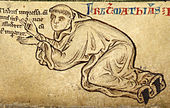

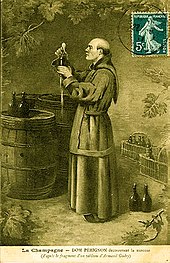
Male Saints and Blesseds
- Boniface (c. 680–755)
- Willibrord (c. 658–739)
- Rupert of Salzburg (c. 660–710)
- Suitbert of Kaiserwerdt (d. 713)
- Sturm (c. 705–79)
- Ansgar (801–65)
- Wolfgang of Regensburg (934–994)
- Adalbert of Prague (c. 956 – 997)
- Gerard of Csanád (c. 980 – 1046)[5]
- Pope Gregory VII (c. 1020 – 1085, r. 1073–85)
- Pope Victor III (c. 1026–87, r. 1086–87)
- Pope Celestine V (1215–96, r. 1294)
- Pope Urban V (1310–70, r. 1362–70)
- Ambrose Barlow (1585–1641)
- Pope Pius VII (1742–1823, r. 1800–23); Servant of God
Popes
- Pope Sylvester II (c. 946–1003, r. 999–1003)
- Pope Paschal II (d. 1118, r. 1099–1118)
- Pope Gelasius II (d. 1119, r. 1118–19)
- Pope Clement VI (1291–1352, r. 1342–52)
- Pope Gregory XVI (1765–1846, r. 1831–46)[5]
Founders of abbeys and congregations and prominent reformers


- Benedict Biscop (c. 628 – 690)
- Erkenwald (also known as Earconwald) (c. 630 – 693)
- Leudwinus (c. 665 – 713)
- Benedict of Aniane (747–821)
- Berno of Cluny (c. 850 – 927)
- Odo of Cluny (c. 878 – 942)
- Majolus of Cluny (c. 906 – 94)
- Odilo of Cluny (c. 962 – c. 1048)
- Walter of Pontoise (c. 1030 – c. 1099)
- Bernard of Cluny (d. 1109)
- Peter the Venerable (c. 1092 – 1156)
- Romuald (c. 956 – c. 1026)
- Robert of Molesme (c. 1028 – 1111)
- Alberic of Cîteaux (d. 1109)
- Stephen Harding (d. 1134)
- Bernard of Clairvaux (1090–1153)
- William of Hirsau (c. 1030 – 91)
- John Gualbert (995–1073)
- Stephen of Obazine (1084–1154)
- Robert of Arbrissel (c. 1045 – 1116)
- William of Montevergine (1085–1142)
- Nicholas Justiniani (fl. 1153–1179)
- Sylvester Gozzolini (1177–1267)
- Bernardo Tolomei (1272–1348)
- Laurent Bénard (1573–1620)
- Prosper Guéranger (1805–1875)
- Jean-Baptiste Muard (1809–1854)
- Boniface Wimmer (1809–1887)
- Maurus Wolter (1825–1890)
- Martin Marty (1834–1896)[5]
- Andreas Amrhein (1844–1927)
- Lambert Beauduin (1873–1960)
- Anscar Vonier (1875–1938) supervised the reconstruction of Buckfast Abbey
Scholars, historians, and spiritual writers
- Jonas of Bobbio (600–659)
- Bede (673–735)
- Aldhelm (c. 639 – 709)
- Alcuin (d. 804)
- Rabanus Maurus (c. 780 – 856)
- Paschasius Radbertus (785–865)
- Ratramnus (d. 866)
- Walafrid Strabo (c. 808 – 49)
- Notker Labeo (c. 950 – 1022)
- Guido of Arezzo (991–1050)
- Hermann of Reichenau (1013–54)
- Paul the Deacon (c. 720 – 99)
- Hincmar (806–82)
- Maurus of Pécs (c. 1000 – c. 1075)
- Peter Damian (c. 1007 – 1072)
- Lanfranc (c. 1005 – 1089)
- Anselm of Canterbury (c. 1033 – 1109)
- Eadmer (c. 1060 – c. 1126)
- Florence of Worcester (d. 1118)
- Symeon of Durham (d. 1130)
- Jocelyn de Brakelond (d. 1211)
- Matthew Paris (c. 1200 – 1259)
- William of Malmesbury (c. 1095 – c. 1143)
- Gervase of Canterbury (c. 1141 – c. 1210)
- Roger of Wendover (d. 1236)
- Peter the Deacon (d. 1140)
- Adam Easton (d. 1397)
- Honoré Bonet (c. 1340 – c. 1410)
- John Lydgate (c. 1370 – c. 1451)
- John Whethamstede (d. 1465)
- Johannes Trithemius (1462–1516)
- Louis de Blois (1506–66)
- Benedict van Haeften (1588–1648)
- Augustine Baker (1575–1641)
- Anthony Batt (d. 1651)
- Jean Mabillon (1632–1707)
- Mariano Armellino (1657–1737)
- Antoine Augustin Calmet (1672–1757)
- Magnoald Ziegelbauer (1689–1750)
- Marquard Herrgott (1694–1762)
- Pietro Luigi Galletti (1724–1790)
- Luigi Tosti (1811–97)
- Jean Baptiste François Pitra (1812–89)
- Oswald William Moosmuller (1842–1901)
- Suitbert Bäumer (1845–94)
- Francis Aidan Gasquet (1846–1929)
- Fernand Cabrol (1855–1937)
- Germain Morin (1861–1946)
- Henri Quentin (1872–1935)
- John Chapman (1865–1933)
- Cuthbert Butler (1858–1934)[5]
Maurists
Members of the Congregation of Saint Maur, a prerevolutionary French congregation of Benedictines known for their scholarship:

- Nicolas-Hugues Ménard (1585–1644)
- Luc d'Achery (1609–85)
- Antoine-Joseph Mège (1625–91)
- Thierry Ruinart (1657–1709)
- François Lamy (1636–1711)
- Pierre Coustant (1654–1721)
- Edmond Martène (1654–1739)
- Ursin Durand (1682–1771)
- Bernard de Montfaucon (1655–1741)
- René-Prosper Tassin (1697–1777)[5]
Bishops and martyrs
- Ernest (d. 1148)
- Laurence of Canterbury (d. 619)
- Mellitus (d. 624)
- Justus (d. 627)
- Paulinus of York (d. 644)
- Leudwinus (c. 665 – 713)
- Oda of Canterbury (d. 958)
- Bertin (c. 615 – c. 709)
- Wilfrid (c. 633 – c. 709)
- Cuthbert (c. 634 – 687)
- John of Beverley (d. 721)
- Swithun (d. 862)
- Æthelwold of Winchester (d. 984)
- Edmund Rich (1175–1240)
- Abbot Suger (c. 1081 – 1151)
- John Beche (d. 1539)
- Richard Whiting (d. 1539)
- Hugh Cook Faringdon (d. 1539)
- Sigebert Buckley (c. 1520 – c. 1610)
- John Roberts (1577–1610)
- Gabriel Gifford (1554–1629)
- Alban Roe (1583–1642)
- Philip Michael Ellis (1652–1726)
- Charles Walmesley (1722–97)
- William Placid Morris (1794–1872)
- John Polding (1794–1877)
- William Bernard Ullathorne (1806–89)
- Roger Vaughan (1834–83)
- Guglielmo Sanfelice d'Acquavilla (1834–1897)[5]
- Joseph Pothier (1835–1923)
- John Cuthbert Hedley (1837–1915)
- Domenico Serafini (1852–1918)
- Placidus Nkalanga (1918–2015)[53]
Twentieth century

- Lambert Beauduin (1873–1960)
- Alfredo Schuster (1880–1954)
- Bede Griffiths (1906–1993)
- Paul Augustin Mayer (1911–2010)
- Hans Hermann Groër (1919–2003)
- Basil Hume (1923–1999)
- Rembert Weakland (1927–2022)
- Daniel M. Buechlein (1938–2018)
- Jerome Hanus (1940-)
- Anselm Grün (1945–)
- Knut Ansgar Nelson (1906–1990)
Benedictine Dames

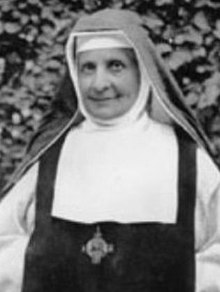
- Scholastica (c. 480 – 547)
- Æthelthryth (c. 636 – 679)
- Hilda of Whitby (c. 614 – 680)
- Werburh (d. 699)
- Mildrith (d. early 7th century)
- Walpurga (c. 710 – 779)
- Wulfthryth of Wilton (c. 937 – 1000)
- (c. 961 – 984)
- Cunigunde of Luxembourg (c. 975 – 1040)
- Hildegard of Bingen (1098–1179)
- Gertrude the Great (1256 – c. 1302)[5]
- Magdalena Mortęska (1554–1631)
- Catherine Gascoigne (1601–1676)
- Gertrude More (1606–1633)
- Barbara Constable (1617–1674)
- Adèle Garnier (1838–1924)
- Laurentia McLachlan (1866–1953)
- Margit Slachta (or Schlachta, 1884–1974)
- Werburg Welch (1898–1990)
- Felicitas Corrigan (1908–2003)
- Hildelith Cumming (1909–1990)
- Mary Boulding (1929–2009)
- Joan Chittister (1936–)
- Thomas Welder (1940–2020)
- Noella Marcellino (1951–)
- Teresa Forcades (1966–)
Oblates
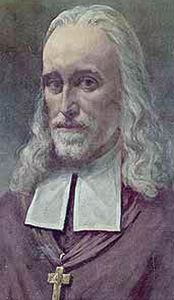
Benedictine Oblates endeavor to embrace the spirit of the Benedictine vow in their own life in the world.[54] Oblates are affiliated with a particular monastery.

- Emperor Henry II (972–1024)
- Frances of Rome (1384–1440)
- Oliver Plunkett (1625–1681)
- Joris-Karl Huysmans (1848–1907)[5]
- Jacques Maritain (1882–1973)
- Romano Guardini (1885–1968)
- Dorothy Day (1897–1980)
- Walker Percy (1916–1990)
- Kathleen Norris (1947– )
See also
- Dom Pierre Pérignon
- Benedictine Confederation
- Catholic religious order
- Cistercians
- French Romanesque architecture
- Sisters of Social Service
- Trappists
References
- ^ https://www.newadvent.org/cathen/02443a.htm Almond, Joseph Cuthbert. "Order of St Benedict" The Catholic Encyclopedia] Vol. 11. New York: Robert Appleton Company, 1911. 16 July 2024
- ^ Almond, Joseph Cuthbert. "Olivetans." The Catholic Encyclopedia Vol. 11. New York: Robert Appleton Company, 1911. 10 April 2019
- ^ Mary Richard Boo OSB and Joan M. Braun OSB, Emerging from the Shadows: St. Scholastica, in Medieval Women Monastics, (Miriam Schmitt OSB and Linda Kulzer OSB, eds) The Liturgical Press, Collegeville, 1996 ISBN 9780814622926
- ^ Stanford, P. (2003). "Dame Felicitas Corrigan". UK Guardian. Retrieved 5 October 2023.
Dame Felicitas - the title Dame is given to English Benedictine nuns in preference to Sister ...
- ^ a b c d e f g h i j k l Alston, Cyprian (1907). . In Herbermann, Charles (ed.). Catholic Encyclopedia. Vol. 2. New York: Robert Appleton Company.
- ^ Oliver OSB, Richard . "A Brief History of the Benedictine Order", OSB.org
- ^ a b c "The Benedictines: An Introduction by Abbot Primate Jerome Theisen OSB. Liturgical Press". www.osb.org. Archived from the original on 26 March 2023. Retrieved 19 July 2021.
- ^ Huddleston, Gilbert Roger (1912). . In Herbermann, Charles (ed.). Catholic Encyclopedia. Vol. 13. New York: Robert Appleton Company.
- ^ One or more of the preceding sentences incorporates text from a publication now in the public domain: Butler, Edward Cuthbert (1911). "Camaldulians". In Chisholm, Hugh (ed.). . Vol. 5 (11th ed.). Cambridge University Press. pp. 79–80.
- ^ Butler, Edward Cuthbert (1911). . In Chisholm, Hugh (ed.). . Vol. 6 (11th ed.). Cambridge University Press. pp. 393–395.
- ^
 One or more of the preceding sentences incorporates text from a publication now in the public domain: Ott, Michael (1908). "Commendatory Abbot". In Herbermann, Charles (ed.). Catholic Encyclopedia. Vol. 4. New York: Robert Appleton Company.
One or more of the preceding sentences incorporates text from a publication now in the public domain: Ott, Michael (1908). "Commendatory Abbot". In Herbermann, Charles (ed.). Catholic Encyclopedia. Vol. 4. New York: Robert Appleton Company.
- ^ Robinson, I. S., Henry IV of Germany 1056–1106, Cambridge University Press, 2003, p. 126ISBN 9780521545907
- ^ Butler, Alban (1845). The Lives of the Fathers, Martyrs, and Other Principal Saints, Volume 3. Dublin. p. 218.
- ^ "Abbaye de Fleury". Archived from the original on 16 August 2010. Retrieved 19 June 2010.
- ^ "Mother Mectilde De Bar", Silverstream Priory
- ^ "Fundacja w Warszawie". mechtylda.info (in Polish). 18 December 2013. Retrieved 2 September 2020.
- ^ "History I". st-benoit-du-lac.com. Archived from the original on 30 March 2009.
- ^ Chadwick, Owen (1998). A History of the Popes, 1830–1914. Clarendon Press. pp. 495–. ISBN 978-0-19-826922-9.
- ^ Wootton and Fishbourne. Ryde.shalfleet.net (4 August 2013). Retrieved on 7 September 2013.
- ^ RGM 2005 OCSO. Citeaux.net (28 February 1947). Retrieved on 7 September 2013.
- ^ Tyburn Foundress Archived 5 February 2012 at the Wayback Machine at Tyburn Convent official website. Retrieved 23 February 2012
- ^ Tyburn Martyrs Archived 21 January 2012 at the Wayback Machine at Tyburn Convent official website. Retrieved 23 February 2012
- ^ Clark, James Midgley. The Abbey of St. Gall as a Centre of Literature & Art, Chapter XII, CUP Archive, 1926, 1926
- ^ Christen, Beat (April 2020). "Auf den Tag genau vor 900 Jahren wurde das Kloster Engelberg gegründet". Luzerner Zeitung (in German). Retrieved 18 October 2022.
- ^ Cross, F. L.; Livingstone, E. A., eds. (1997). The Oxford Dictionary of the Christian Church (3rd ed.). Oxford University Press, US. p. 514
- ^ Dom Bruno Hicks (2009). "The Benedictines". Archived from the original on 5 November 2017. Retrieved 15 February 2015.
- ^ Colin Battell, OSB (2 December 2006). "Spirituality on the beach". The Tablet. pp. 18–19. The late Cardinal Basil Hume was Abbot of Ampleforth Abbey before being appointed Archbishop of Westminster.
- ^ Martin, Christopher (2007). A Glimpse of Heaven: Catholic Churches in England and Wales. London: English Heritage. Examines the abbeys rebuilt after 1850 (by benefactors among the Catholic aristocracy and recusant squirearchy), mainly Benedictine but including a Cistercian Abbey at Mount St. Bernard (by Pugin) and a Carthusian Charterhouse in Sussex. There is a review of book by Richard Lethbridge "Monuments to Catholic confidence," The Tablet 10 February 2007, 27.
- ^ Mian Ridge (12 November 2005). "Prinknash monks downsize". The Tablet. p. 34.
- ^ "History". Saint Louis Abbey.
- ^ "History – The English Benedictine Congregation". benedictines.org.uk. Archived from the original on 11 February 2015. Retrieved 11 February 2015.
- ^ "HOME | Glastonbury Monastery | Somerset". Mysite.
- ^ Rees, Daniel (2000). "Anglican Monasticism". In Johnston, William (ed.). Encyclopedia of Monasticism. New York: Fitzroy Dearborn Publisher. p. 29. ISBN 1-57958-090-4.
- ^ Hillaby, Joe (1994–1996). "The ritual-child-murder accusation: its dissemination and Harold of Gloucester". Jewish Historical Studies. 34: 69–109. JSTOR 29779954.
- ^ Kaur, Nirmal (2005). History of Education. Mittal Publications. p. 44. ISBN 81-7099-984-7.
- ^ Wormald, Francis; Wright, C.E. (1958). The English Library before 1700. London: The Athlone Press. p. 15 – via University of London.
- ^ a b Savage, Ernest (1912). Old English Libraries. London: Methuen & Co. Ltd.
- ^ "'History of Belmont Abbey', Belmont Abbey, North Carolina". Archived from the original on 16 April 2018. Retrieved 4 November 2017.
- ^ a b c St Benedict (1981). RB 1980: the rule of St. Benedict in Latin and English with notes. Translated by Fry, Timothy. Collegeville, MN: The Liturgical Press. pp. 136–141. ISBN 0-8146-1211-3. OL 4255653M.
- ^ "The Benedictine Congregations and Federations of North America in the Benedictine Confederation". www.osb.org. Archived from the original on 3 September 2017. Retrieved 24 November 2015.
- ^ "The Defining Features of the Benedictine Order". Durham World Heritage Site.
- ^ "Order of Saint Benedict". Saint John's Abbey.
- ^ Customary of Mount Michael Abbey
- ^ Hembry, Phyllis (1990). The English Spa, 1560–1815: A Social History. Fairleigh Dickinson Univ Press. ISBN 9780838633915.
- ^ Bradley, Ian (2012). Water: A Spiritual History. Bloomsbury Publishing. ISBN 9781441167675.
- ^ "Benedictine Abbeys and Priories in the U.S. | Encyclopedia.com". www.encyclopedia.com. Retrieved 25 April 2022.
- ^ "Directory of OSB Congregations". OSB DOT ORG. Retrieved 25 April 2022.
- ^ "The Benedictine Confederation". OSB.org. Retrieved 24 October 2018.
- ^ "St Benedict & The Order | Benedictine Monks".
- ^ Simpson, Fr. Benedict (2016). "Directory of Parishes". The Western Rite Communities of the Russian Orthodox Church Outside Russia. Retrieved 26 August 2019.
- ^ "Holy Monasteries of Our Lady and Saint Laurence Antiochian Orthodox Christian Archdiocese of North America, Western Rite Vicariate". The Benedictine Fellowship of Saint Laurence. Archived from the original on 4 April 2018. Retrieved 10 March 2018.
- ^ "Who we are…". Saint Augustine's House. 2018. Retrieved 26 August 2019.
- ^ "Bishop Gervas Placidus Nkalanga, OSB, of Hanga Abbey Celebrates 50 Years as a Bishop". Hanga News. 9 June 2011.
- ^ "928: Secular institutes". Catechism of the Catholic Church – Part 1 Section 2 Chapter 3 Article 9 Paragraph 4. Retrieved 26 August 2019.
Further reading
- Dom Columba Marmion, Christ the Ideal of the Monk – Spiritual Conferences on the Monastic and Religious Life (Engl. edition London 1926, trsl. from the French by a nun of Tyburn Convent).
- Mariano Dell'Omo, Storia del monachesimo occidentale dal medioevo all'età contemporanea. Il carisma di san Benedetto tra VI e XX secolo. Jaca Book, Milano 2011. ISBN 978-88-16-30493-2
- . . Vol. 1 (11th ed.). 1911. p. 13.
External links
- Official website
- Confoederatio Benedictina Ordinis Sancti Benedicti, the Benedictine Confederation of Congregations (archived 4 July 2008)
- Links of the Congregations Archived 24 August 2018 at the Wayback Machine
- Saint Vincent Archabbey (archived 29 June 2016)
- Boniface WIMMER
- The Alliance for International Monasticism
- Benedictines – Abbey of Dendermonde in ODIS – Online Database for Intermediary Structures
- Benedictine rule for nuns in Middle English, Manuscript, ca. 1320, at The Library of Congress
- Benedictines
- 6th-century establishments in Italy
- 6th-century establishments in Europe
- Asceticism
- Benedictine spirituality
- Catholic orders and societies
- Catholic spirituality
- Christian religious orders established in the 6th century
- History of Catholic monasticism
- Institutes of consecrated life
- Monastic rules
- Order of Saint Benedict
See what we do next...
OR
By submitting your email or phone number, you're giving mschf permission to send you email and/or recurring marketing texts. Data rates may apply. Text stop to cancel, help for help.
Success: You're subscribed now !
